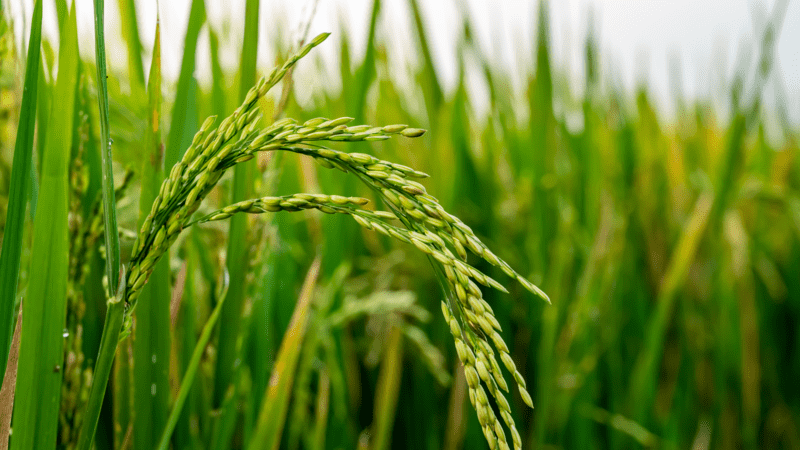Indonesia's surging corn price spurs buyers to consolidate feed wheat demand, eye imports

Indonesia's state-owned livestock farming company, Berdikari, has requested the Indonesian Feedmills Association GPMT to submit the required imported feed wheat demand from its members amid rising raw material costs in the form of domestic corn and imported soybean meal prices.
Berdikari has sought Indonesian feed millers' imported feed wheat demand to be submitted by Feb. 17, where the latter will be obliged to purchase the required feed wheat at a price of Rupiah 5,775/kg (38 cents/kg), in a letter dated Feb. 16 seen by S&P Global Commodity Insights. Berdikari intends to buy Australian feed wheat with Standard Feed Wheat specifications for May-June shipments to Cigading and Surabaya if they can gather enough interest.
Feed wheat could be imported through Berdikari, according to Indonesian buyers.
But feed millers believe that feed wheat at that price, before adding the associated cost, continues to remain expensive while noting that the cargo will only arrive from June 2023 onward, whereas the outlook on domestic corn prices remains unclear.
A similar request was submitted to GPMT Feb. 10, where Berdikari requested members to consolidate demand to import milling grade wheat from Ukraine, Bulgaria or Australia with an obligation to purchase between Rupiah 6,200-6,575/kg. The request was unable to garner sufficient interest, according to sources.
Platts assessed Australian Standard White Wheat FOB Australia at $315/mt Feb. 16, according to S&P Global Commodity Insights data.
Domestic corn prices have been soaring in the past weeks. Domestic corn was heard to be offered at Rupiah 5,700/kg Feb. 17, gaining more than 10% since Jan. 30 when it was offered at Rupiah 5,150/kg, S&P Global's records show.
These prices pale in comparison against prices between September-December 2022, when local corn prices reached a low of Rupiah 4,200-4,300/kg and an export program was started to support the rapidly falling corn prices. As a result, more than 200,000 mt of Indonesian corn was exported to neighboring destination markets of Vietnam, the Philippines and Malaysia, S&P Global previously reported.
"Corn prices started picking up as farmers felt no incentives to plant corn at the low prices and switched a large amount of planting area to cassava crops which is easier and cheaper to plant as they need less fertilizers. Higher corn price is also a result from higher input costs for seeds and fertilizers, and some unfavorable weather in the past weeks during harvest," a trader said.
Some of the feed millers had anticipated a spike in domestic corn prices. But in February 2022, carried-over feed wheat stock from 2021 made the high corn prices manageable.
High corn prices add to the already-high cost of feed production on the back of rising soybean meal prices imported from South America. However, weaker futures and a weaker undertone on soybean meal premiums over the week ended Feb. 17 provided some relief for the buyers. CFR Indonesia (2 ports) soybean meal indications were heard in the low- to mid-$60s/st over May (K) and July (N) futures for April-July shipments on Feb. 17.
"Corn and soybean meal are both very expensive now, it is going to squeeze poultry farmers. Some of them have already started reducing their feed rations to save cost," an Indonesian trader said.
Platts assessed Corn CFR North East Asia at $338/mt Feb. 16, according to S&P Global data.

News
India's wheat stocks in state-run inventories depleted to a 16-year low as the central government sold record quantities to augment domestic supplies and rein in rising prices amid poor crop yields during two previous seasons. Wheat stocks in government warehouses were at 7.5 million mt at the start of April, down from 8.4 million mt a year ago, an official at the Food Corporation of India told S&P Global Commodity Insights. Over the past decade, wheat stocks on April 1 averaged 16.7 million mt. Despite the sharp fall in stocks, the government was able to meet the buffer and strategic reserve norms that mandate holding wheat stocks at or above 7.46 million mt April 1. The government has planned to aggressively acquire wheat to replenish its stocks at state-run warehouses. The government plans to procure around 33.5 million mt wheat produced in marketing year 2024-25 (April-March), nearly 28% higher than the actual procurement of 26.2 million mt a year prior. India could not reach its wheat procurement target in MY 2022-23 and MY 2023-24, as heat waves weighed on the crop size. However, the pace of procurement has slowed over the past week as recent showers in key wheat producing states have delayed harvest operations, traders said. The government has pegged India's wheat output in crop year 2023-24 (July-June) at 112 million mt, slightly higher than the 110.55 million mt harvested in the previous season. However, an S&P Global Commodity Insights survey of 13 analysts and traders found India's wheat harvest in MY 2023-24 is likely slightly lower year on year, at 107 million-108 million mt. Recently, it has ordered mandatory declaration of wheat stocks available with traders, private warehouses, retailers and processors on a government-managed portal effective April 1 and every Friday thereafter, in a bid to ensure availability and prevent hoarding. Record sales The country has delved into state reserves to sell wheat to bulk consumers, as millers to try to curb domestic prices that have been above the state-fixed minimum buying price since the last crop was harvested. India has also provided repeated extensions to the scheme of distribution of free food grains to over 810 million beneficiaries under the Pradhan Mantri Garib Kalyan Anna Yojana for five years effective Jan. 1, 2024, has dampened the prospects for wheat and non-basmati rice exports in 2024. The move is aimed at ensuring food security to the beneficiaries, according to a government statement. The scheme, which was set to end this December, has been extended amid ongoing state assembly polls and upcoming general elections next year. However, if the government misses its procurement target, it may have to look for cheap imports or reduce import duty on the grain to ensure adequate domestic supplies. Despite the tight supply, it has been resisting calls to reduce or remove the 40% import duty on wheat. The government is also likely to extend export restrictions on wheat until March 2025. India banned wheat exports in May 2022, after domestic supplies tightened amid a drop in output. In marketing year 2022-23 (April-March), India planned to export nearly 10 million mt of wheat but ended up shipping nearly 5 million mt. Geopolitical tensions Benchmark grain, oilseed and vegetable oil futures rose overnight in the US and during morning trade in Asia April 19, reversing a bearish streak, after Israel launched a retaliatory missile attack on Iran, fueling fears of an escalating conflict in the Middle East. Any potential supply bottlenecks may spur a rise in export prices of wheat from Black Sea origin, traders said. The most active July soft red winter wheat contract on the Chicago Board of Trade rose 2.6% from the previous close to $5.675/bushel at 0320 GMT. As of 1640 GMT, the contract was trading at $5.62/bushel, up 1.67% from the previous close. In the EU, the Euronext milling wheat contract for May was up 0.4% from the previous close at Eur206.50/mt ($219.88) as of 1640 GMT. Platts, part of S&P Global Commodity Insights, assessed EU 11.5% wheat FOB CVB at $213.25/mt April 18, up $1/mt on the day.

News
Bayer AG has announced the pilot of an expert generative AI (GenAI) system that “quickly and accurately” answers questions related to agronomy, farm management and Bayer agricultural products. The pilot has been developed in collaboration with Microsoft as leading technology partner and Ernst & Young (EY) as an industry partner, the company said. The system is the result of Bayer using proprietary agronomic data to train a large language model (LLM) with years of internal data, insights from thousands of trials within its vast testing network and centuries of aggregated experience from Bayer agronomists around the world, the company said. “Our unique GenAI system has the potential to serve agronomists and benefit farmers all over the world, further advancing AI as an indispensable technology for agriculture,” said Amanda McClerren, CIO and head of digital transformation & information technology for Bayer’s crop science division. Bayer said it is exploring ways to integrate the expert GenAI system into its digital offerings, and the company anticipates broad opportunities for collaboration with other agricultural offerings and partners. “Bayer aims to expand the pilot of the expert GenAI system to selected agronomists and potentially farmers as early as this year, while continuing to advance a separate GenAI prototype allowing users to directly query their own farm data,” the company said. In addition, the partnership between Bayer and Microsoft enables the company to bring ready-made capabilities, AgPowered Services, to the agri-food industry, such as Bayer’s Historical Weather that brings a comprehensive weather dataset to Azure Data Manager for Agriculture that spans the last 40 years and provides detailed, field-level weather insights across global agricultural regions, the company said. Integrating tools from IBM, including from the IBM Environmental Intelligence Suite, the new capability, which was previously available for internal use only, can inform weather risk assessments and actuary processes, Bayer said. It will also be used by Bayer and others to forecast crop seasonality and production changes year over year, as well as train agronomic models, it said. Meanwhile, Bayer is developing a connector that enables access to irrigation data from Lindsay Corp., an industry-leading irrigation solution provider. This expands the data types available to Azure Data Manager's enterprise customers, making it possible for them to connect to irrigation data in the same way as weather, imagery, original equipment manufacturer (OEM) and other data types, the company said. The new cloud offerings will also support regulatory and sustainability reporting, such as providing supply chain traceability that can help ensure compliance with new laws such as the EU Deforestation Regulation, which is expected to go into effect at the end of 2024, Bayer said. This article was first published in chemweek.com. Photo credit: Bayer

News
Asia has seen the fastest growth in biofuels production and exports globally, driven by government policies and export markets for feedstocks. To capitalize on the boom, governments have rapidly pushed out biofuel mandates focused around their country’s main agricultural products. Presently, the largest biofuel producers in the region are China, India, Indonesia, Malaysia, the Philippines and Thailand. Here’s a ready reckoner for Asia’s major biofuel policies along with production, trade and prices. Click for the full-size infographic